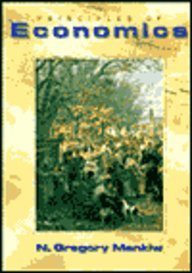 | |
| Author | N. Gregory Mankiw |
|---|---|
| Published | 1997 (Harcourt) |
| ISBN | 0-030-27087-1 |
Principles of Economics [1] is an introductory economics textbook by Harvard economics professor N. Gregory Mankiw. It was first published in 1997 and has ten editions as of 2024. [2] The book was discussed before its publication for the large advance Mankiw received for it from its publisher Harcourt [3] and has sold over a million copies over its lifetime, generating Mankiw at least $42 million. [4] After criticism about the price from students Mankiw decided to donate the textbook royalties from his students to charity. [5]
Contents
Principles of Economics is the standard textbook for American economics departments' introductory classes. [6] [7] [8] The current publisher Cengage claims it is the "most popular economics textbook". [9]